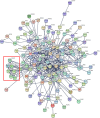"Exosomics"-A Review of Biophysics, Biology and Biochemistry of Exosomes With a Focus on Human Breast Milk
- PMID: 29636770
- PMCID: PMC5881086
- DOI: 10.3389/fgene.2018.00092
"Exosomics"-A Review of Biophysics, Biology and Biochemistry of Exosomes With a Focus on Human Breast Milk
Abstract
Exosomes are biomolecular nanostructures released from cells. They carry specific biomolecular information and are mainly researched for their exquisite properties as a biomarker source and delivery system. We introduce exosomes in the context of other extracellular vesicles, describe their biophysical isolation and characterisation and discuss their biochemical profiling. Motivated by our interest in early-life nutrition and health, and corresponding studies enrolling lactating mothers and their infants, we zoom into exosomes derived from human breast milk. We argue that these should be more extensively studied at proteomic and micronutrient profiling level, because breast milk exosomes provide a more specific window into breast milk quality from an immunological (proteomics) and nutritional (micronutrient) perspective. Such enhanced breast milk exosome profiling would thereby complement and enrich the more classical whole breast milk analysis and is expected to deliver more functional insights than the rather descriptive analysis of human milk, or larger fractions thereof, such as milk fat globule membrane. We substantiate our arguments by a bioinformatic analysis of two published proteomic data sets of human breast milk exosomes.
Keywords: breast milk; exosome; maternal health; micronutrient; proteomics.
Figures


Similar articles
-
Highest concentration of breast-milk-derived exosomes in colostrum.Pediatr Int. 2022 Jan;64(1):e15346. doi: 10.1111/ped.15346. Pediatr Int. 2022. PMID: 36370374
-
Fingerprinting Breast Milk; insights into Milk Exosomics.EMBnet J. 2024;29:e1048. doi: 10.14806/ej.29.0.1048. Epub 2024 May 22. EMBnet J. 2024. PMID: 38845752 Free PMC article.
-
A method for the isolation and enrichment of purified bovine milk exosomes.Reprod Biol. 2017 Dec;17(4):341-348. doi: 10.1016/j.repbio.2017.09.007. Epub 2017 Oct 10. Reprod Biol. 2017. PMID: 29030127
-
Human Breast Milk Exosomes: Affecting Factors, Their Possible Health Outcomes, and Future Directions in Dietetics.Nutrients. 2024 Oct 17;16(20):3519. doi: 10.3390/nu16203519. Nutrients. 2024. PMID: 39458514 Free PMC article. Review.
-
Application of Milk Exosomes for Musculoskeletal Health: Talking Points in Recent Outcomes.Nutrients. 2023 Nov 1;15(21):4645. doi: 10.3390/nu15214645. Nutrients. 2023. PMID: 37960298 Free PMC article. Review.
Cited by
-
Aberrant Expression of Long Non-coding RNAs in Exosomes in Follicle Fluid From PCOS Patients.Front Genet. 2021 Feb 17;11:608178. doi: 10.3389/fgene.2020.608178. eCollection 2020. Front Genet. 2021. PMID: 33679867 Free PMC article.
-
The Role of Exosomes in Stemness and Neurodegenerative Diseases-Chemoresistant-Cancer Therapeutics and Phytochemicals.Int J Mol Sci. 2020 Sep 17;21(18):6818. doi: 10.3390/ijms21186818. Int J Mol Sci. 2020. PMID: 32957534 Free PMC article. Review.
-
Exosomes of pasteurized milk: potential pathogens of Western diseases.J Transl Med. 2019 Jan 3;17(1):3. doi: 10.1186/s12967-018-1760-8. J Transl Med. 2019. PMID: 30602375 Free PMC article. Review.
-
The Potential Roles of Extracellular Vesicles as Biomarkers for Parkinson's Disease: A Systematic Review.Int J Mol Sci. 2022 Sep 29;23(19):11508. doi: 10.3390/ijms231911508. Int J Mol Sci. 2022. PMID: 36232833 Free PMC article.
-
Anti-Zika virus and anti-Usutu virus activity of human milk and its components.PLoS Negl Trop Dis. 2020 Oct 7;14(10):e0008713. doi: 10.1371/journal.pntd.0008713. eCollection 2020 Oct. PLoS Negl Trop Dis. 2020. PMID: 33027261 Free PMC article.
References
Publication types
LinkOut - more resources
Full Text Sources
Other Literature Sources
Molecular Biology Databases

